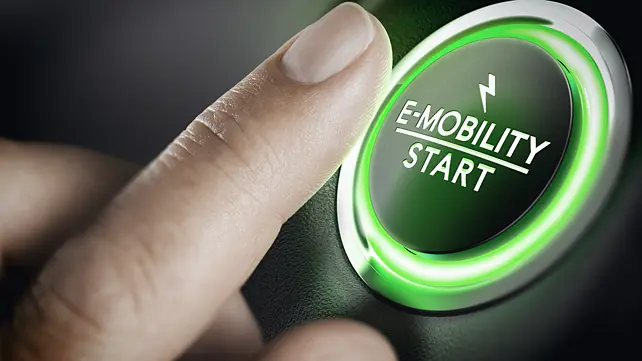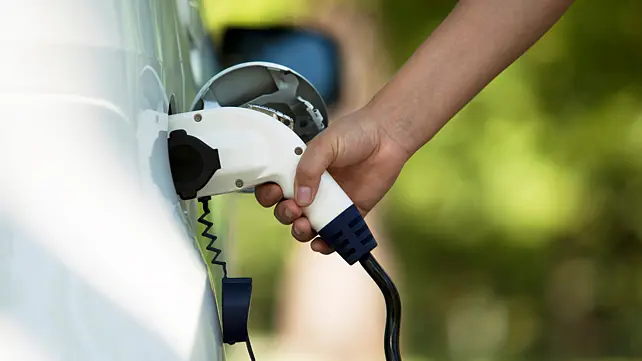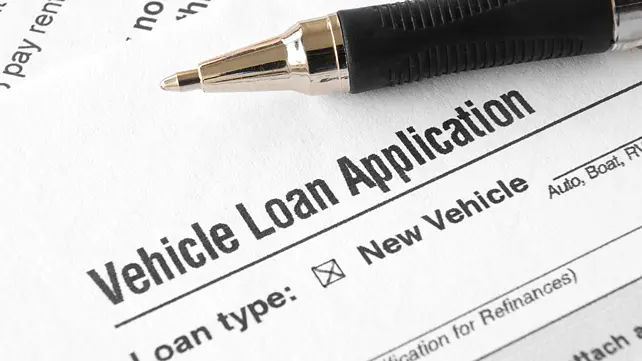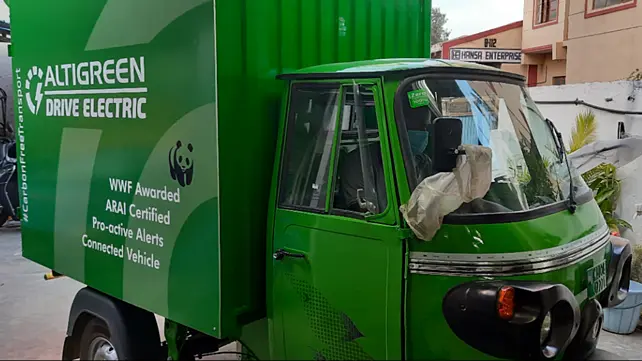
India's switch to electric vehicles (EVs) is inevitable. The transformation to a zero emission future, which earlier appeared as a Herculean task is now gaining momentum. The pandemic has unlocked myriad opportunities for India to emerge as a global player in this segment as post-COVID consumer preferences are largely in its favour.
A digital revolution is happening, e-commerce is booming, rising fuel costs and increasing responsibilities towards a sustainable future are further contributing to the EV transition, mainly in the commercial segment, where cost efficiency is a deciding factor.
EV sales have already breached pre-COVID levels and the rising demand from consumers has now mandated the stakeholders and policy makers to shift gears from incentive-based policies to customer-centricity, so that existing opportunities can be transformed into profits. To ensure the uphill climb is sustained, challenges like lack of enough financing options, high interest rates and low loan-to-value ratios must be addressed at the earliest. And also, there is a very strong need of financing solutions for commercial EVs used in fleet operations and last mile delivery. They have traditionally not seen adequate support from commercialised banks.
India has recently strengthened its position as an EV OEM, with a strong EV component and battery manufacturer start-up ecosystem germinating. This is creating a huge opportunity for investors to reap benefits of an electric future. As per industry reports, EV sales present an investment opportunity of $ 177 bn for OEMs in vehicle production, $ 2.9 bn for the deployment of charging infrastructure, $ 12.3 bn in battery manufacturing and $ 206 bn revenue opportunity from end-consumers.

No doubt there is an enormous opportunity for investments to finance OEMs, battery manufacturers, charging stations but this can only happen through systemic policy support and streamlining of market designs, business methods and financial restructuring.
Financing EVs – A Key Challenge
The challenges that need to be addressed is that electric three-wheelers (e3W) have become the platform of choice for last mile deliveries. However, the options for their financing are very less as compared to other conventional variants (or passenger vehicles) available in the market. Commercialised banks are still hesitant to give loans to the segment and financing companies (non-banking) offer loans at very high interest rates, which are not feasible in the long run.
As the use of electric vehicles for commercial purposes is still new, banks still want to de-risk themselves from the segment due to uncertainties of EV performance or lack of confidence over profitability and viability of the businesses using EVs.
India sells over four million motor vehicles every year out of which only 25% are purchased outright and the rest 75% are financed by banks, non-banking financial institutions and others. Banks account for about 60% of the total vehicle lending in the country. As per Reserve Bank of India data, in 2019 the total vehicle lending was INR 4.7 lakh crore. The data also show that banks offered INR 10,155 crore in loans in the December 2019 quarter compared with INR 3,833 crore in the same period in 2018.
All these loans were majorly disbursed for conventional internal combustion engine vehicles as EV forms less than 1% of India’s total motor vehicle fleet.

These figures prove that financing EVs has become a chicken-and-egg problem in India. Lenders are wary of financing a nascent market; and the market size (EV) doesn’t grow because of the lack of good financing options. Additional factors against EVs include battery life and resale value/ used vehicle market for repossessed EVs.
These risk factors ultimately result in higher interest rates, heavy down payments and shorter repayment durations, pushing the EMIs higher. To make change happen, there is need for standard practices and policies for financing the “EV product”.
There are some options still available for financing privately owned electric cars but it will not make a major difference because as per reports, 70% of India's fleets comprise of two-wheelers, another 18% are mainly of small and affordable vehicles like shared, public transport, goods vehicles and economy cars.
Making The Best Of The E-Commerce Boom:
Indian logistics industry has recently gone through a massive transformation and the growth of online commerce, especially in the pandemic, has brought a tectonic shift. New transportation or delivery methods have emerged owing to consumer demands like 15-minute delivery, and hyperlocal delivery.
This e-commerce boom has largely pushed logistics providers to fast pace their EV adoption, which is helping them in reducing operational costs by over 40%. Rising fuel prices have further created a huge demand for e3Ws and other variants like EV mini trucks to meet the present-day requirements. The entire last-mile transportation industry is willing and working towards adopting green and eco-friendly technologies, and are actively switching towards electric mobility.

A huge demand is being experienced across all sections and there is a raging interest for 3Ws or cargo vehicles even among small businesses or low-income groups for commercial purposes, who find them more economical in terms of operating costs and maintenance than ICE vehicles. This is creating a multiplier effect and demand is increasing to install charging infrastructure (not necessarily fast-charging) at central hubs to help overcome range anxiety and increase operational efficiency.
However, lack of easy financing is restricting them to tap the existing opportunities and both private and public sector banks have to be more supportive so that the low interests are maintained. For instance, typical banks offer loans at 6-9% interest, but when it comes to EVs, the same rate jumps to 18-24%!

What Lies Ahead?
Industry reports tell that India's transition to electric vehicles will require a cumulative capital investment of $ 266 bn (INR 19.7 lakh crore) in EVs, charging infrastructure, and batteries over the next decade. There is a strong need of catalysing investments and finding out solutions for financial institutions including banks and NBFCs to look at priority-sector lending and interest-rate subvention to support the swift transformation.
There is a strict need of creating better partnerships between EV OEMs, end customers and financing institutions to make sure India's switch to electric mobility, especially in the last mile segment, is achieved hassle free.
About the Author: Dr Amitabh Saran is CEO at Altigreen Propulsion Labs.